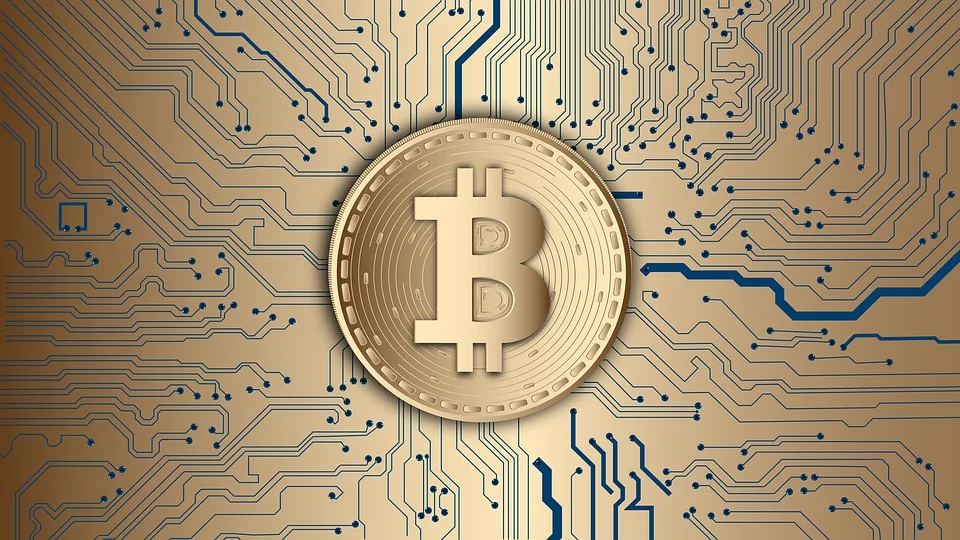You’ll frequently hear the terms “blockchain” and “cryptocurrency” used in the same sentence. Although they are two very different technologies, they are also inextricably linked.
Blockchain technology is being financed by both established companies and start-ups. Even yet, learning the terminology but failing to grasp how they relate to one another could be a mistake before making a digital currency investment. We offer all the knowledge you require regarding blockchain and cryptocurrencies, so you are always up to date with modern technological developments.
Blockchain and cryptocurrency are concepts that are frequently used in the same sentence. Despite being two independent technologies, they are already connected.
What’s The Difference Between Blockchain and Cryptocurrency?

Source: pixabay.com
Platforms that require a coin can be made possible via blockchains. The distributed ledger and mechanism for network consensus maintenance are provided by blockchain technology. The network can keep track of transactions and move value and information thanks to distributed consensus.
The tokens used in these networks to transfer money, settle transactions, or offer network incentives are called cryptocurrencies. In addition, you might consider them a tool on the blockchain that can be used to digitize asset ownership or even act as a resource or utility in specific circumstances.
Coinbase and Binance are two popular trading and investment platforms. To learn about their differences, visit www.internetically9.com.
Blockchain and Cryptocurrency

Source: pixabay.com
Blockchain is a database of all cryptocurrency transactions made at any time, everywhere around the globe. It’s a system storing data that makes it difficult to alter, hack, or manipulate the system. Blockchain is a public ledger that disseminates data about all cryptocurrency transactions throughout a network of all linked computers, allowing anybody to examine the information, including cryptocurrency mining and trading. It lacks a single authority or centralized management.
Authentication comes first in the process. Every transaction involves two participants, as clear-cut as it can be. One person is the sender, while the other person is the recipient. Using cryptographic keys, the transaction between these parties is verified. These keys are nothing more than a string of information that serves as the users’ identification.
Public and private keys are available. The public key is visible to everyone, whereas the private key is solely visible to the user, as the name implies. Users can unlock the transactions they want to complete using both keys. This action creates a block that serves as a representation of this transaction.
The transaction must now be authorized after being approved between the users. For this, the transaction must be accepted as genuine by the vast majority of “nodes.” As a result, each node in the network that is resent receives the block that contains the current transaction.
Owners of the machines in the network are incentivized through rewards to verify transactions. The term “proof of work” refers to this procedure. They must add a block to the chain by resolving a challenging mathematical puzzle. Mining is the process of solving complicated mathematical problems. Mine workers are referred to as miners.
Following this, the block is now included in the current blockchain. The update is subsequently made available throughout the network after the addition. In this way, the entire transaction is finished.
It is clear that blockchain technology is here to stay and will become much more popular in the years to come, given that it is a secure platform, has the capacity to build a decentralized peer-to-peer network for enterprises, and is reliable.
Benefits of Blockchain

Source: pixabay.com
Increased privacy and security
A significant advantage of this new technology is the security of systems powered by blockchain. Due to the way blockchain technology operates prevents fraud and unauthorized activity, and it offers increased protection. Blockchain technology creates an unchangeable record of transactions with end-to-end encryption. A network of computers is used to store the data on the blockchain, making it virtually impossible to hack.
Speed
Blockchain is much faster at handling transactions than traditional techniques since it does away with intermediaries and replaces any human processes that are still present in transactions. Blockchain can sometimes complete a transaction in a matter of seconds or less. However, the speed at which a blockchain-based system can process transactions can vary depending on a number of variables, including the size of each data block and network activity.
Lower Costs
Businesses currently spend a lot of money trying to manage their current system better. They aim to save costs so they can invest the savings in creating something new or streamlining existing procedures.
Organizations can significantly reduce the costs related to third-party providers by embracing blockchain. Blockchain eliminates the requirement for any vendor charges because it lacks an inherited centralized player. Additionally, authenticating a transaction requires less engagement, which further reduces the need for spending money or effort on simple tasks.
Transparency
Transparency of transaction history has never been greater thanks to blockchain technology. As a sort of distributed ledger, it shares a copy of the documentation among all nodes in the network. Everyone has easy access to view the data on a blockchain ledger. Any changes to a transaction history are immediately visible to everyone on the network. As a result, everyone has access to all currency exchange information.
Network Distributed
Users cannot edit the data once it has been loaded into the method, and removing it is difficult. Even minute variations can be tracked, logged, and distributed on the blockchain ledger for everyone to see.
Additionally, it focuses on spreading knowledge or understanding about network distribution.
The fact that the network is distributed offers a number of benefits at the same time. For instance, since no one owns the network, users can constantly have multiple copies of the same data on hand.
Conclusion
Blockchain technology and cryptocurrencies are causing upheavals outside of the financial services industry as conventional institutions and start-ups alike increasingly seize the opportunity it presents. The rate of technological advancement doesn’t appear to be slowing down.
While some people are still unsure about the future of cryptocurrencies, many people view 2024 as a turning point for their investment strategy.
